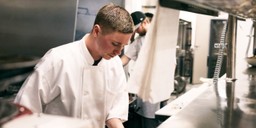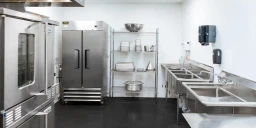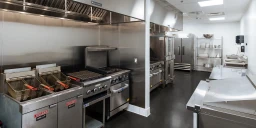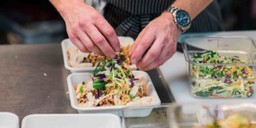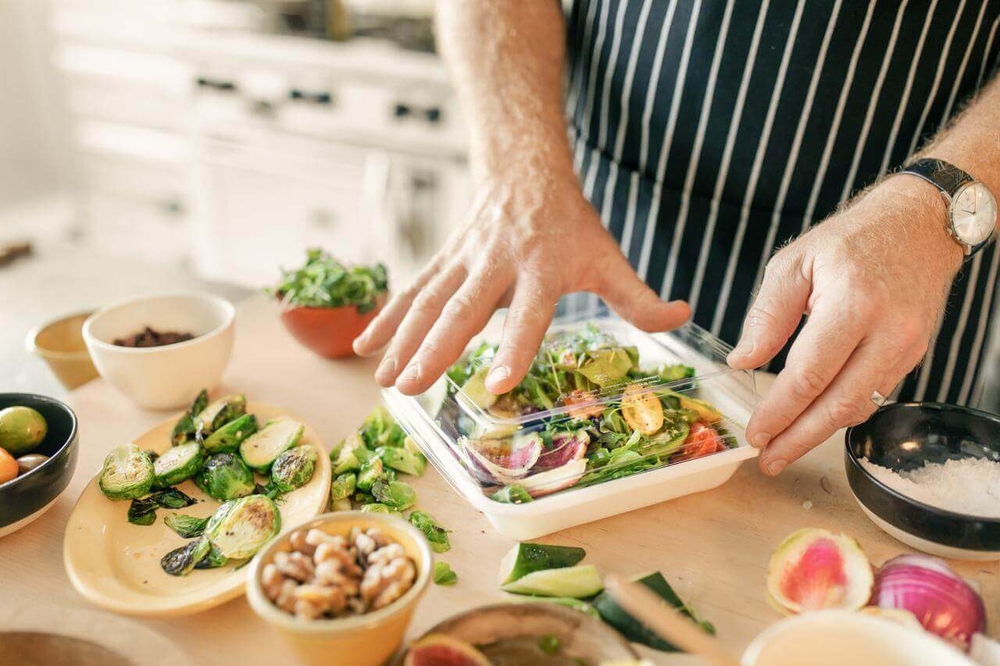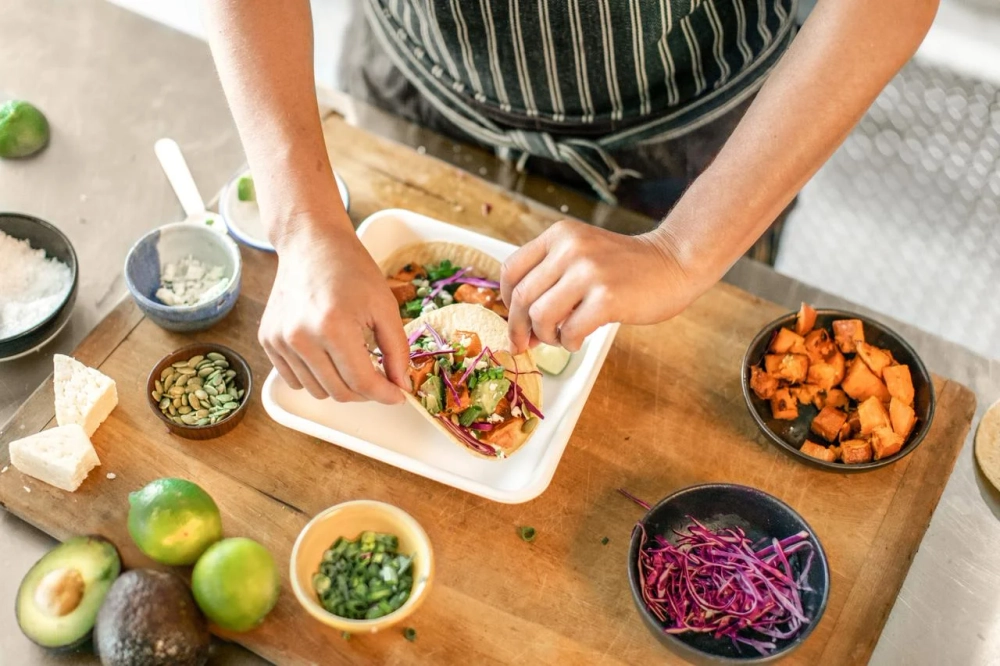The A-to-Z Ultimate Restaurant Glossary Guide
Table of Contents
Across the restaurant industry, there are a variety of terms used by industry vets. We’re bringing the inside scoop on the top terminology most commonly used in a restaurant, and how to use each.
A | B | C | D | E | F | G | H | I | K | J | K | H | I | J | K | L | M | N | O | P | Q | R | S | T | U | V | X | Y | Z
86
Especially if you have a seasonal menu at your restaurant, you may find items that are more popular than others. If there’s a menu item that you’re thinking of removing, you’re going to “86” that item.
Adam and Eve on a Raft
Primarily used in the United States, Adam and Eve on a raft refers to when a customer orders two eggs (poached or scrambled) on a piece of toast.
A La Carte
Refers to items on a menu a customer orders individually, as an add-on.
All Day
This term refers to the total number of menu items ordered. This is often used in the kitchen to know how many dishes are needed to prep. As an example, it might be used as “We need 5 pepperoni pizzas, 2 sides of meatballs, and 6 orders of garlic bread all day”
Au gratin
This is a common cooking practice, where a chef will cover a meal with breadcrumbs and cheese, then bake it until browned.
Average Basket Size
Specifically when it comes to delivery orders, the average basket size refers to the average cost of the items sold in one order.
Back of House (BOH)
If you’re an industry vet, you’ll know that BOH stands for the back of the house, referring to the back end of the restaurant behind the scenes. This consists of the kitchen, dishwashing units, and prep areas where chefs, sous chefs, and the like all gather to cook each dish.
Bain-marie
This is a cooking method that involves warming delicate foods in a dish above boiling water to avoid direct contact with the heat to prevent curdling.
Bev Nap
Bev naps are the small square paper napkins that are used instead of a coaster.
Blanch
Boiling food for a short amount of time and then placing it in ice water to stop further cooking.
Blue-Plate Special
A low-cost menu item that changes every day and is typically served at diners and cafes.
Brigade System
The brigade system is a common framework that is followed to ensure your entire restaurant runs as efficiently as possible. This ensures each staff member has a designated set of tasks to keep incoming orders flowing smoothly, and completed orders being delivered on time.
Butterfly
Cutting meat (typically poultry) down the middle without slicing the center and opening both sides so that it looks like a butterfly. This technique makes it easier to cook the meat evenly.
Caramelize
To cook sugar until it turns to a thick liquid syrup, or to cook food until it browns and develops a caramel flavor (like caramelized onions).
Chef de Cuisine
The Chef de Cuisine is the head chef who oversees the entire kitchen, including food prep, cooking, and final review of each dish before it leaves the kitchen.
Chef de Partie
A Chef de Partie refers to a new chef at the beginning of their career who can fit into multiple roles. Sous Chef is the next promotion for a Chef de Partie.
Commissary Kitchens
Commissary kitchens are commercial kitchens available to rent from third parties which can be set up in any location such as a commercial kitchen in Austin or a ghost kitchen in Philadelphia, Miami, or Chicago. They provide all the equipment that their renters need. From stainless steel countertops to food truck parking, they cover your culinary needs.
Comp
“Comping” something means giving something away for free to your customer. Usually, this is to smooth things over with a disgruntled customer who has had some part of their meal go wrong.
Confit
To cook meat, usually duck, slowly in its own fat.
Cooked to Order
Cooked-to-order commonly refers to a dish that is cooked specifically to a customer’s requests/order.
Cost of Goods Sold (COGS)
The cost of goods sold (or COGS), is the cost of ingredients needed to prepare a specific menu item.
Double
This term is commonly used by the kitchen staff when they work two back-to-back shifts.
Dredge
Coating raw meat with breadcrumbs or flour before frying.
Drop
A ‘drop’ signals to start cooking an accessory item; e.g. “Drop the fries”
Dupe
A dupe is the information that gets passed to the kitchen from the front-of-house staff so the chefs know what to prepare for the customers.
Early Bird Special
You’ve probably dined at a restaurant that offers an “Early Bird Special”. This common phrase refers to a limited-time offer for discounted menu items, often in the early hours of the morning.
Emulsify
To combine liquids that usually wouldn’t stay mixed together due to their properties. Egg yolk helps emulsify oil and vinegar to turn it into mayonnaise.
Expeditor
The employee is responsible for arranging food from the kitchen and sending it out to the dining room for the servers.
FIFO (First In, First Out)
This is a common food storage practice that helps extend the shelf life of ingredients by always using the ingredients that have been in storage the longest first.
Fillet
Removing bones from meat, or cutting meat into a thin slice.
Fire
Orders are given by the head of the kitchen to start preparing a certain dish.
Flash
When a particular meat is undercooked, a chef might “flash it” in an oven to raise the temperature slightly and cook it the remainder of the way.
Fold
Combining both light and heavy ingredients by stirring the mixture from bottom to top.
Frenching
Removing meat from the bones of a rack of lamb, beef, or other meat, for presentation purposes.
Front of House
This refers to the customer-facing side of a restaurant, where waiters, bussers, and hosts work.
Garde Manger
The part of the kitchen where the chef prepares cold menu items such as salads, desserts, and cold appetizers.
Ghost Kitchen
Ghost kitchens, also known as dark kitchens, are commercial kitchens optimized for third-party food delivery service. Each delivery kitchen is located in areas with a high concentration of delivery demand. The kitchens themselves don’t have a storefront and the staff prepares dishes off of their menus that are only available for delivery.
Glaze
To cover food in a liquid to add a glossy coat.
Gueridon Service
Table-side food preparation that requires a gueridon (trolley) is used to transport ingredients to a guest table where a dish is prepared live for the customer.
HACCP
Hazard Analysis Critical Control Point (HACCP) – HACCP functions as a management system that manages food safety by assessing and regulating biological, chemical, and physical hazards throughout the entire process, spanning from raw material production, procurement, and handling to manufacturing, distribution, and consumption of the final product.
Hockey Puck
Do you enjoy your hamburgers medium well or well done? A hockey puck refers to a hamburger ordered well done.
Hull
Remove the leaves and stems from a strawberry.
In the Weeds
This common phrase can be applied to both the front of house and back of house. Whenever a restaurant is overwhelmed with either incoming orders or customers waiting to be seated, they are “In the Weeds”.
Julienne
This is a common practice when chefs are prepping a meal, to slice food (commonly vegetables) into very thin, long pieces.
Jumpin
A colloquial term to describe a very popular and busy restaurant.
Kitchen Layout Optimization
Designing kitchens for efficiency and workflow.
Leaven
To help the dough rise by adding a gas, like baking powder or yeast, and giving it time to grow.
Macerate
To soften fruit in liquid and sugar.
Mis en Place
This is a French term used in the kitchen to refer to gathering all ingredients before beginning to prep a dish.
Monkey Dish
A small dish that is used to serve condiments or nuts. It can also be used to dispose of bones when eating meat.
Mull
To steep a beverage with spices and fruit ingredients.
Nutritional Information
Providing clear details about the nutritional content of menu items.
Off-Premise
Off-premise refers to any meal items that are not going to be consumed in-house, including delivery orders, takeout, and pickup.
Otter
Otter is an easy-to-use restaurant operating system that integrates your delivery apps, POS, Direct Sales, and more into a single tablet. Otter helps streamline operations by aggregating purchases from platforms like DoorDash and Uber Eats.
Otter is available in all CloudKitchen facilities.
Overhead
Overhead refers to any additional factors that go into calculating food costs at your restaurant. This includes the electricity that is required to prepare a dish, the cost of labor, and even shipping costs.
Poach
A cooking method that involves boiling over low heat.
Pump it Out
Preparing food quickly.

POS (Point-Of-Sale)
The point of sale or point of purchase is the time and place at which a retail transaction is completed.
QSR (Quick Service Restaurant)
This is an acronym commonly used to refer to a Quick Service Restaurant, such as McDonald’s or Taco Bell.
Reconstitute
To add liquid back to a dehydrated food, usually by immersing it in water.
Render
Removing fat from meat by cooking it over low heat.
Rollup
Dining utensils that are rolled up in napkins.
Roux
Fat and flour mixture (like butter or oil and flour) used to thicken sauces or soups.
Runner
A runner is someone who will bring prepared dishes to designated tables when an order is ready.
Saucier
A chef de partie that is responsible for any item that is sautéed.
Score
Creating small shallow incisions near the surface of food.
Shelf Life
How long a particular ingredient can sit on the shelf before losing quality or expiring.
Sidework
Busy work that is done by the front-of-house staff that is required to keep the restaurant operational. Includes drying and polishing silverware, refilling salt and pepper shakers, refilling toothpicks and napkins.
Sommelier
An employee who specialized in wine. Usually, the one to make recommendations to customers about which wine pairs best with their dish of choice.
SOS
“Sauce on the side”
Stretch It
Something that is done when a restaurant is running low on a certain ingredient, and they do whatever they can to “stretch” whatever is left to last them the entire night.
Table d’Hôte
A multi-course set menu that is offered at a fixed price.
Table Turns
Table turns refer to the number of times that a specific table has gone through the entire meal process (from being seated to paying) each shift.
Tare
The weight of the container that a product is delivered in, this number should be subtracted from the total weight of the product to pay for an accurate weight.
Tempering
Raising the temperature of a cold or room-temperature ingredient by slowly adding hot liquid.
Tourne
When a vegetable is cut in the shape of a small tapered cork.
Truss
Tying poultry limbs together with string so that they stay still while cooking.
Turn and Burn
To turn over tables quickly, usually at a busy restaurant with a long waiting list.
Top
The number of customers in a party. A seven top refers to a dining party of seven people.
Ultra-pasteurization
The process of heating up milk to 280 degrees Fahrenheit for a few seconds and then rapidly reducing the temperature, resulting in milk that’s 99.9% free from bacteria and extending its shelf-life.
Unleavened
Made without yeast or any other leavening agent, often referring to bread.
Vegan Options
Expanding menu offerings to accommodate vegan dietary preferences.
Waste Reduction
Waste minimization is a set of processes and practices intended to reduce the amount of waste produced.
Well Drinks
Alcoholic drinks that are made from cheap house liquors.
Xanthan Gum
A food additive, commonly used to thicken salad dressings, that is water-soluble and produced by the fermentation of sugar.
Xylitol
A naturally fulfilling alcohol found in most plants such as fruits and vegetables, widely used as a sugar substitute in sugar-free chewing gums, mints, and candies.
Yield
The amount of product you have after processing.
Zero Waste
Zero waste is a set of principles focused on waste prevention that encourages redesigning resource life cycles so that all products are repurposed and/or reused. The goal of the movement is to avoid sending trash to landfills, incinerators, oceans, or any other part of the environment.
Zest
To grate the peel of a citrus fruit such as a lemon.
Explore ghost kitchen locations across the US:
- Ghost kitchens in San Francisco
- Ghost kitchens in LA
- Ghost kitchens in NYC
- Ghost Kitchens in Toronto
- Ghost Kitchens in Atlanta
- Ghost Kitchens in Dallas
- Ghost Kitchens in Chicago
- Ghost Kitchens in Denver
- Ghost Kitchens in Miami
| DISCLAIMER: This information is provided for general informational purposes only and the content does not constitute an endorsement. CloudKitchens does not warrant the accuracy or completeness of any information, text, images/graphics, links, or other content contained within the blog content. We recommend that you consult with financial, legal, and business professionals for advice specific to your situation. |
Sources:
https://restaurant.eatapp.co/blog/the-a-to-z-guide-to-restaurant-lingo
https://blog.etundra.com/food-service/glossary-restaurant-lingo/
https://www.lightspeedhq.com/blog/kitchen-brigade/
https://restaurant.opentable.co.uk/resources/restaurant-industry-terms/
https://pos.toasttab.com/blog/on-the-line/culinary-terms
More insights & stories
